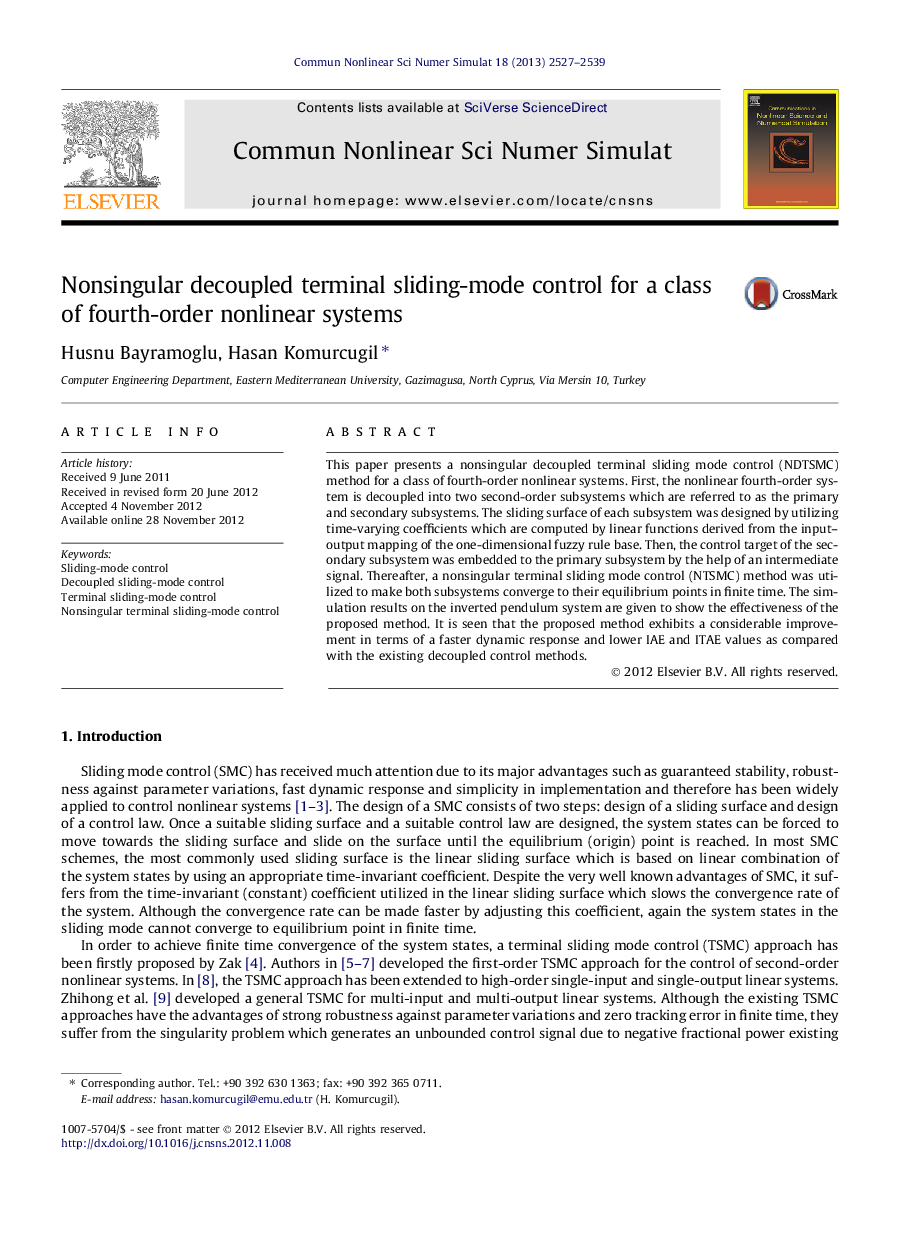| Article ID | Journal | Published Year | Pages | File Type |
|---|---|---|---|---|
| 758358 | Communications in Nonlinear Science and Numerical Simulation | 2013 | 13 Pages |
This paper presents a nonsingular decoupled terminal sliding mode control (NDTSMC) method for a class of fourth-order nonlinear systems. First, the nonlinear fourth-order system is decoupled into two second-order subsystems which are referred to as the primary and secondary subsystems. The sliding surface of each subsystem was designed by utilizing time-varying coefficients which are computed by linear functions derived from the input–output mapping of the one-dimensional fuzzy rule base. Then, the control target of the secondary subsystem was embedded to the primary subsystem by the help of an intermediate signal. Thereafter, a nonsingular terminal sliding mode control (NTSMC) method was utilized to make both subsystems converge to their equilibrium points in finite time. The simulation results on the inverted pendulum system are given to show the effectiveness of the proposed method. It is seen that the proposed method exhibits a considerable improvement in terms of a faster dynamic response and lower IAE and ITAE values as compared with the existing decoupled control methods.
► A nonsingular terminal sliding mode control is introduced for a class of fourth-order systems. ► First, the fourth-order system is decoupled into two second-order subsystems. ► Lyapunov stability theorem is used to guarantee the existence of the sliding mode. ► The proposed control method achieves a finite time convergence for both subsystems. ► Simulation results not only show a faster convergence speed, but also possess lower IAE and ITAE values.
